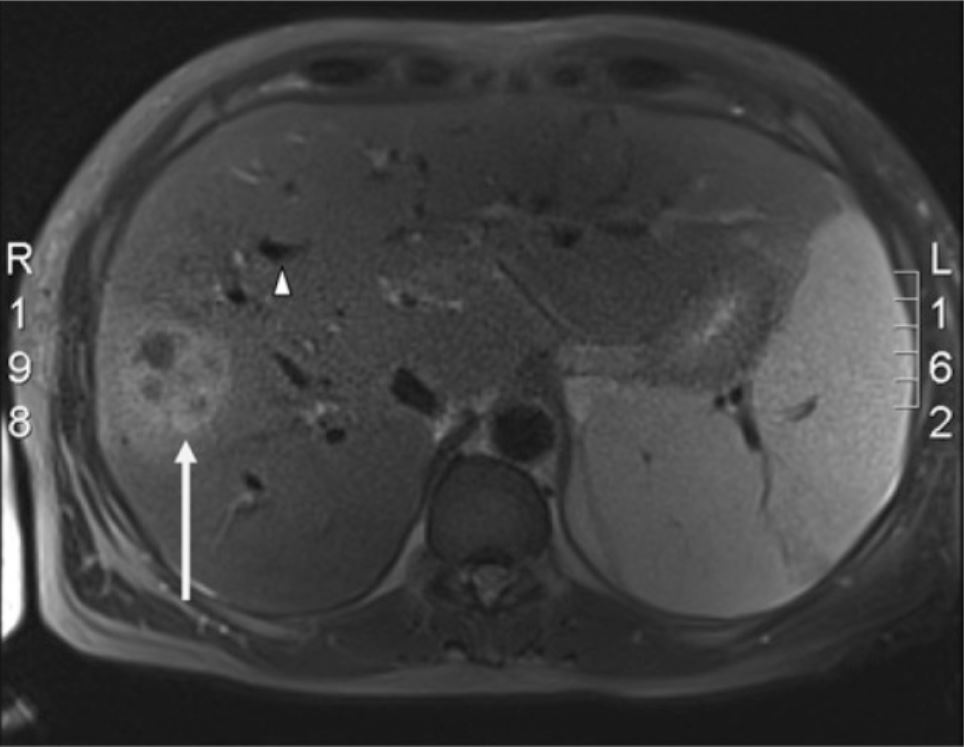Playlist
Show Playlist
Hide Playlist
Space-Occupying Lesions (SOLs)
-
Slides GD liver disease.pdf
-
Download Lecture Overview
00:02 Let's talk about Space-Occupying Lesions that are important for you in the Liver. 00:06 Let's begin with our topic of Liver abscesses. 00:10 Remember, in particular Helmut known as Entamoeba histolytica in Entamoeba histolytica amoebic abscess, apart from the patient having diarrhea, is also having issues in the liver, where there is abscess you heard of perhaps anchovy paste? Literally, the abscess within there within neutrophils, releasing all that elastase is causing massive destruction. 00:36 It looks like paste. 00:38 typically, solitary, in the right lobe, presents after resolution of diarrhea organism and Amoeba Hystolitica Aspirate is described as anchovy paste. 00:53 Pyogenic abscess: solitary or multiple associated with diverticular disease or colonic tumor, remember, here, it is the fact that if you have diverticular disease that you might have fecalith: Accumulation of feces in the diverticulum. 01:07 There's every possibility that you might have anaerobic growth. 01:10 may result in Pyogenic abscess within the liver. 01:17 Hydatid cysts: The classic imaging findings of adjacent daughter cysts and hydatid worms is what you are thinking of. 01:25 Positive echinococcal serology. 01:28 aspiration contra-indicated due to anaphylaxis Remember, with some of this helmuts and such, there is every possibility that the patient may actually develop anaphalaxis. 01:40 Be very careful with such interesting serologies that are positive. 01:45 echinococcal hydatid cysts. 01:49 A simple cyst. 01:50 found in 1% of population, usually solitary.
About the Lecture
The lecture Space-Occupying Lesions (SOLs) by Carlo Raj, MD is from the course Liver Diseases: Basic Principles with Carlo Raj.
Included Quiz Questions
Which of the following hepatic space-occupying lesions has aspirates resembling anchovy paste?
- Amebic liver abscess
- Hepatocellular carcinoma
- Pyogenic abscess
- Hydatid cyst
- Simple cyst
Which of the following hepatic space-occupying lesions is associated with diverticular disease?
- Pyogenic abscess
- Hydatid cyst
- Simple cyst
- Amebic liver abscess
- Hepatocellular carcinoma
Why is aspiration from a hydatid cyst contraindicated?
- It can cause anaphylaxis.
- It can cause the spread of the cyst.
- It can cause an increase in the size of the cyst.
- It can cause seeding in the peritoneal cavity.
- It can cause a collapse of the cyst, causing difficulty in the resection.
Customer reviews
5,0 of 5 stars
| 5 Stars |
|
5 |
| 4 Stars |
|
0 |
| 3 Stars |
|
0 |
| 2 Stars |
|
0 |
| 1 Star |
|
0 |




